


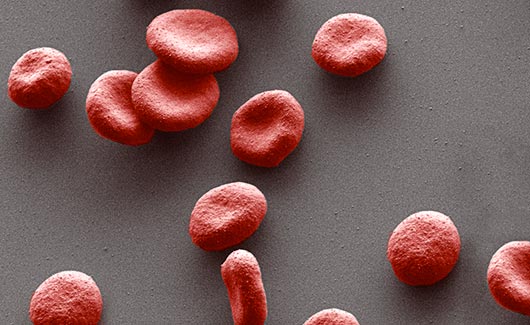
These are red blood cells, responsible for delivering oxygen throughout the body. The average life of a human red blood cell is120 days. Imaged by Debbie Powell
Covered with spikes, a grain of pollen from a dahlia resembles a medieval mace when magnified a million times.
The stomata of a plant? Millions of these microscopic pores cover the leaves, the stem, all the plant parts not buried in the soil. Guard cells open and close these mini-mouths to allow carbon dioxide, oxygen, water and minerals in and out of the plant. Tipped off by beneficial bacteria way down at the plant roots, the guard cells can signal the stomata to close to keep out disease-causing bacteria, recent UD research has shown.
UD’s Bio-Imaging Center is helping researchers to unmask some of the mysteries of life, exposing phenomena ranging from yeast to blood platelets at awe-inspiring resolution, as well as assisting scientists venturing into nanomaterials development.
The staff has expertise with a variety of high-tech microscopes—atomic force, confocal, electron, wide-field—and their skills are in demand by researchers on campus and at other academic institutions and industries in the region.
The center’s newest addition is a super-resolution microscope on lease from Carl Zeiss, Inc. Nature Methods declared super-resolution microscopy the Method of the Year in 2008 for its anticipated role in revolutionizing understanding of cellular biology. With it, scientists can look at a single molecule.
Jeff Caplan, the center’s associate director, calls it “an amazing tool.” And for someone who is used to doing things like live-cell imaging and laser capture microdissection, that’s saying something. Caplan currently is investigating stromules, the tube-like extensions that connect the photosynthesis engines called chloroplasts to the nuclei in plant cells. He wants to understand how these connectors function, particularly in plant immunity.
Donna Woulfe, assistant professor of biological sciences, is using the new scope to visualize microparticles formed from blood platelets and identify particular lipids exposed on the surfaces of both the microparticles and platelets, which can be specifically labeled with antibodies.
Why is this important? “Some studies suggest that shedding of platelet microparticles takes place to a greater extent in patients with cardiovascular disease than in healthy patients,” Woulfe notes.
The Bio-Imaging Center is jointly housed at the Delaware Biotechnology Institute and the Department of Biological Sciences at UD.
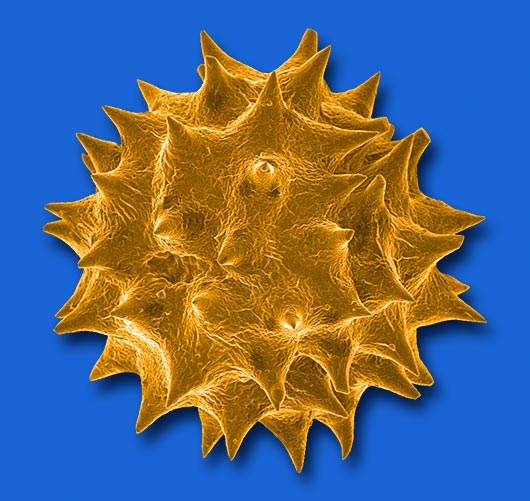
Dahlia pollen. Imaged by Debbie Powell
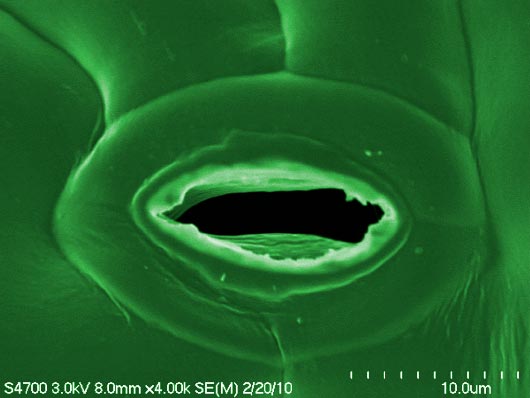
Plant stomata. Imaged by Amutha Kumar and Harsh Bais
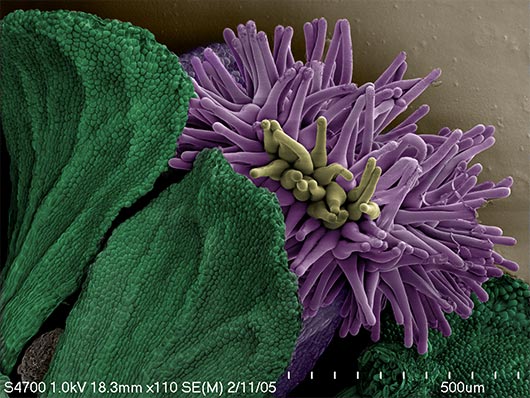
Arabidopsis flower. Imaged by Debbie Powell; colored by Dave Scheiblin
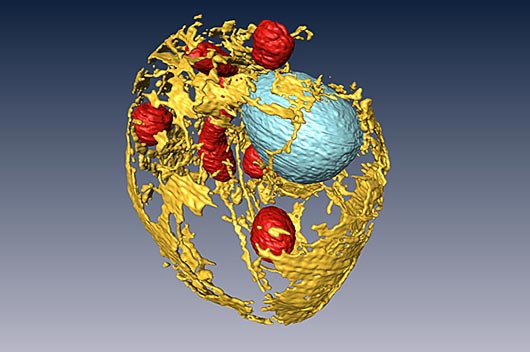
3-D image of a yeast cell. In red are the mitochondria, the cell’s power plants; in yellow is the endoplasmic reticulum, a network of membranes; and in blue is the nucleus.
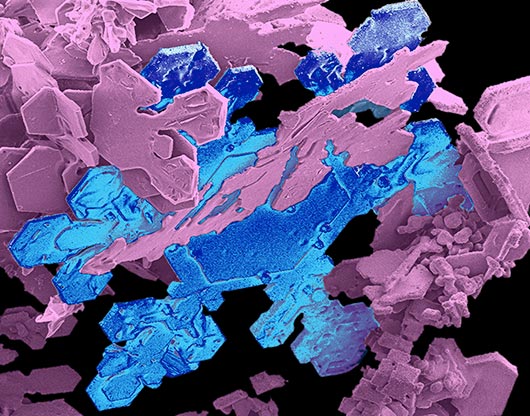
These snow crystals won the Microscopy Society of America’s 2009 Micrograph Competition. Imaged by Debbie Powell
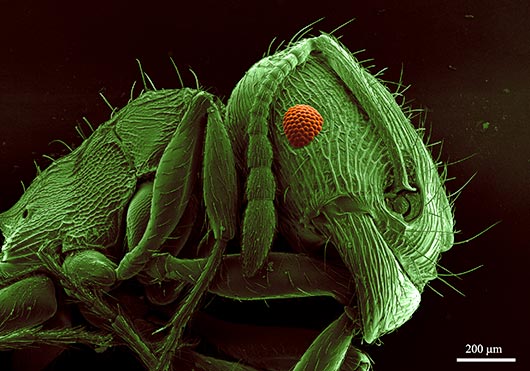
An ant that invaded the lab one day demanded a closer look. Imaged by Shannon Modla
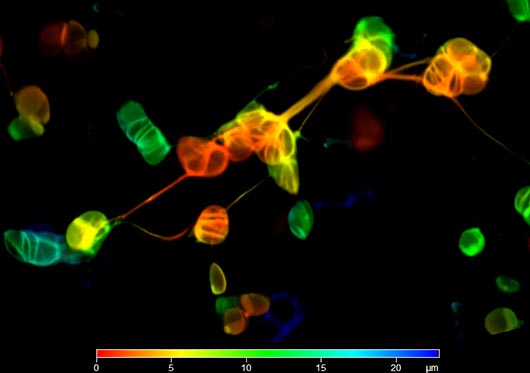
Stromules are the fine tubes in plant cells that connect the food-making chloroplasts to cell nuclei. Imaged by Jeff Caplan
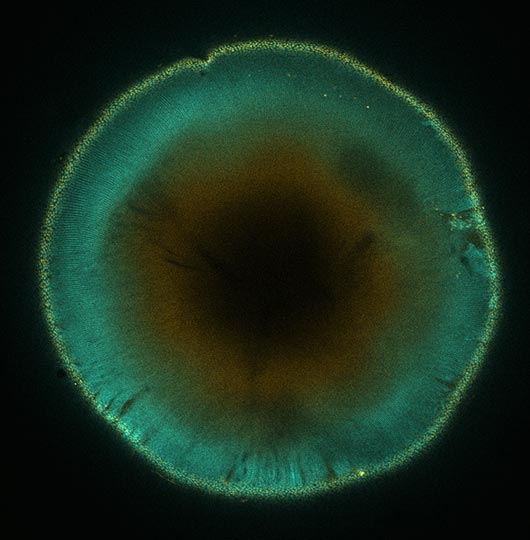
Mouse eye magnified. It is helping to illuminate human eye diseases such as cataracts. Imaged by David Scheiblin from the laboratory of Prof. Melinda Duncan
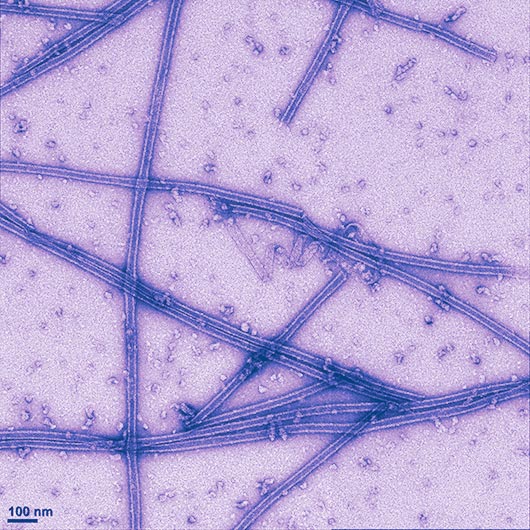
Microtubules reassembled from a cow’s brain. Proteins called kinesins, which help with cell division and other functions, attach to and walk along these filaments. Imaged by Shannon Modla in association with the laboratory of Prof. Tatiana Polenova
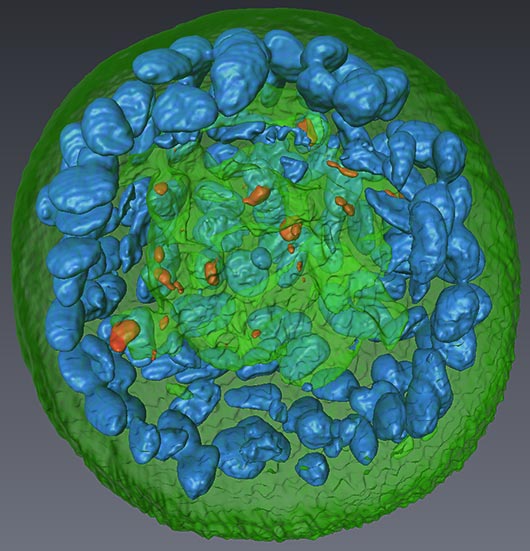
Artificial salivary glands are among the novel biomaterials in development at UD. Imaged by Jeff Caplan and Swati Bhatt in association with the laboratories of Profs. Xinqiao Jia and Randall Duncan
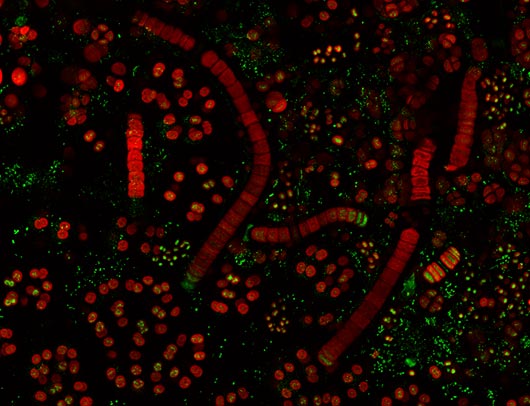
The dark streaks you see on some roofs is this blue-green bacteria (cyanobacteria). Imaged by Jeff Caplan
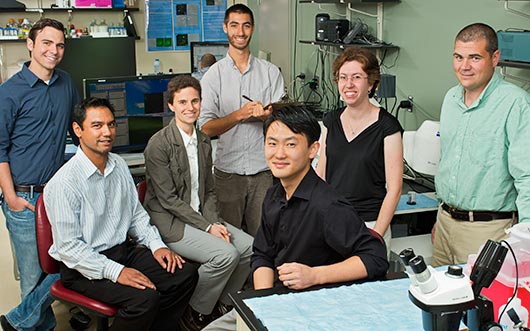
Top microscopers. UD’s Bio-Imaging staff provides academic and industrial researchers with technical expertise across the gamut of microscopy platforms and methodologies, with a special emphasis on the life sciences and soft materials. From left, Scott Jacobs, Chandran Sabanayagam, Shannon Modla, Bob Cirino, Jeff Caplan, Debbie Powell and Michael Moore.